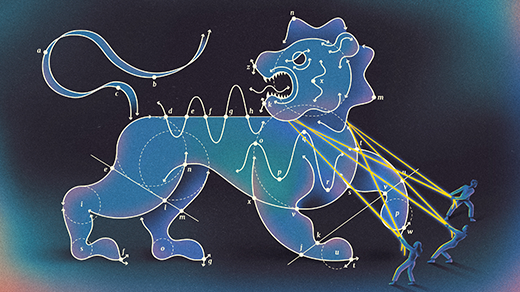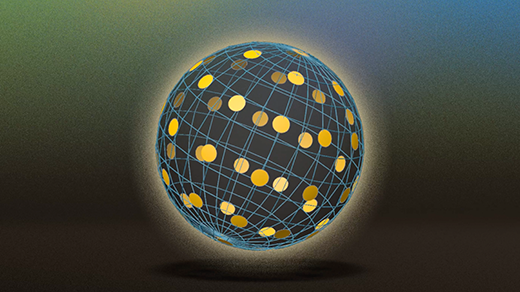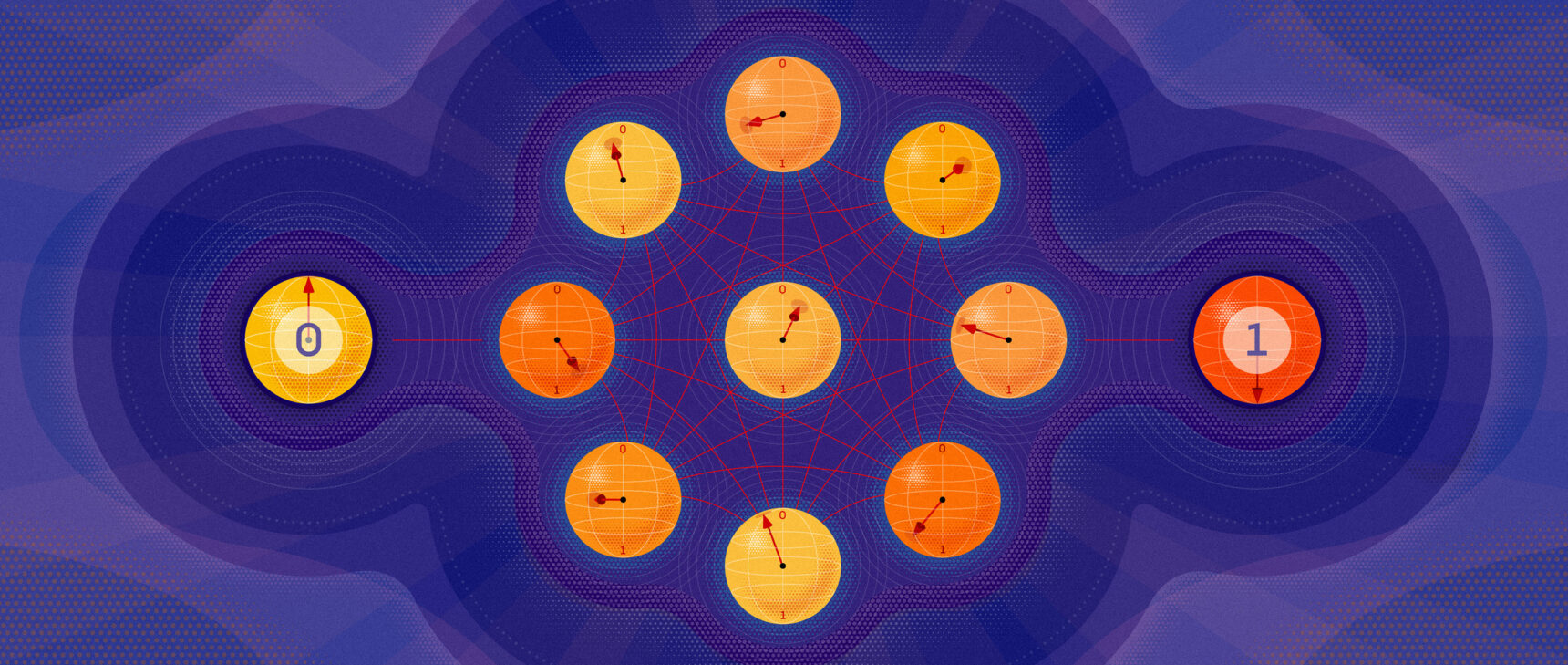The Mathematician Who Delights in Building Bridges
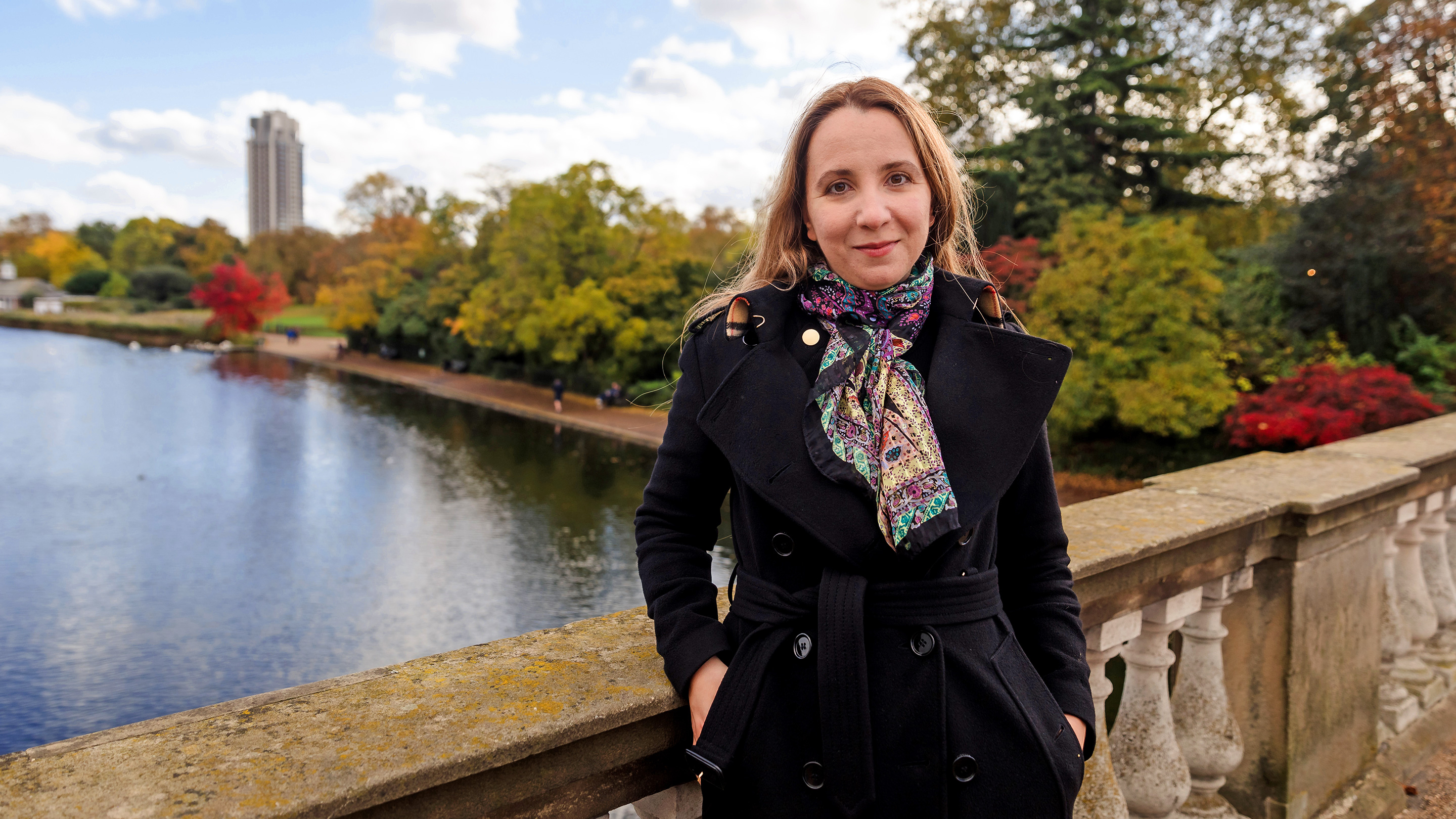
Ana Caraiani, standing here on the Serpentine Bridge near the Imperial College London campus, does work in mathematics that bridges distant areas of the field.
Philipp Ammon for Quanta Magazine
Introduction
For her senior thesis at Princeton University, Ana Caraiani was given a challenging problem from her adviser, the mathematician Andrew Wiles. He’d recently garnered fame for his 1994 proof of Fermat’s Last Theorem, but Caraiani had less luck with her assigned problem. Still, although she ended up making no significant headway, she remained undaunted.
“The point of the exercise wasn’t necessarily to solve the problem,” she said. “I think Wiles was teaching me that you shouldn’t spend all your time working on things you know how to do. It’s worth taking on problems that are really hard, and maybe too hard.”
In the process, she learned a lot about how to do mathematical research. “You can’t always pursue things in a linear fashion. If you get stuck on one part of the problem, you move on to another part.” That experience has served Caraiani well in her work on a broad collaborative effort to connect disparate areas of mathematics. Known as the Langlands program because it builds on work by Robert Langlands in the 1960s, it is one of the biggest, most ambitious and most challenging undertakings in mathematics today.
Caraiani — now a professor and Royal Society university research fellow at Imperial College London — is not one to shy away from a challenge. She grew up in Bucharest, Romania, and sometimes faced obstacles that had nothing to do with her ability. As a high school student in 2001, she became the first Romanian woman in more than a decade to qualify for the International Mathematical Olympiad, winning a silver medal that year and gold medals the next two years. But despite her eventual success, she did not feel welcome and rarely got encouragement.
“Some people, including math teachers organizing the event, told me not to get my hopes up,” she said. “That made me want to prove them wrong.”
Caraiani spoke with Quanta about her experiences in mathematics and her work on the Langlands program, which has been described as a way to create a “grand unified theory of mathematics.” The interview has been condensed and edited for clarity.

Caraiani works on one of the most ambitious projects in mathematics today, known as the Langlands program. It’s a highly collaborative effort, and she often meets with colleagues at the Dalby Court at Imperial College.
Philipp Ammon for Quanta Magazine
Have things changed since you were a high school student trying to break into the male-dominated Math Olympiads?
I faced explicit discouragement in high school, whereas today there is a lot of explicit encouragement. Nevertheless, I have seen people around me experience subtle forms of discrimination. It’s definitely harder to build a research program and establish long-term relationships if others view you as different. And it’s harder to get taken seriously if you’re always having to prove yourself.
I realize I’ve been luckier than most and have already made my name. But I still recognize that mathematics is not as inclusive as it should be — not just for women, but for other people from underrepresented groups. That is especially true in my field, the Langlands program, which requires so much specialized knowledge that there is a huge barrier to entry.
I’m doing what I can to help others pursue this amazing field, though I feel it is not enough. I try more and more to make space for women — and those who are underrepresented in general — at conferences and within my own research group. And I’m happy that my group has a higher percentage of women than is common in the field.
What drew you into that amazing field?
I graduated from Princeton in 2007, and Wiles encouraged me to do my graduate work at Harvard, where I could study with Richard Taylor, who had helped work out a key piece of the Fermat proof. It was clear that I would do Langlands because that’s what he did.
But for me, there was a much deeper appeal. The Langlands program, in essence, is about forging connections between different areas of mathematics. I like all varieties of math — number theory, analysis, geometry, topology — and I realized that if I chose this area, I wouldn’t have to limit myself to just one thing. When we work on conjectures that we don’t know how to prove, we can throw everything we have at them — drawing on any relevant tool in mathematics — in the hopes of making progress.
What does progress in this enterprise look like?
A lot of what my colleagues and I do involves building bridges between two different sectors — things called Galois groups and representations on one side, and other things called modular forms and their generalizations on the other.
So, let’s start with Galois groups. We can use polynomial equations like x2 – 3 = 0 as an example. The solutions, or roots, to this equation are $latex \sqrt{3}$ or -$latex \sqrt{3}$, and there’s an obvious symmetry between these two numbers, as they are reflections of each other across the y-axis. The Galois group is not the group of roots to these polynomial equations, but rather the group of symmetries that are shared by the roots of a given equation.
Once you start looking at polynomials of degree 5 (with terms like x5 or y5), the equations get very complicated, and the Galois groups get complicated as well. Galois representations are a way of simplifying things a bit. Instead of looking at the whole group, you just look at parts — or cross sections — of it. It’s like converting a 3D object into a 2D picture; the picture doesn’t contain all the information the original object had, but it still contains enough for some purposes.
And the other side of the divide?
A modular form is a highly symmetric function on the upper (positive) half of the complex plane, in which the x-axis represents real numbers and the y-axis represents imaginary numbers [multiples of i, the square root of −1]. We consider this a “nice” function in the sense that it is smooth, which means it doesn’t make any abrupt jumps or have jagged edges. That’s another way of saying it is differentiable.
We can divide the upper plane into little regions, or “tilings.” And because of the symmetry, if you know the value the function takes in one tiling you can predict the values it will assume in another. Next, we can take some of these infinitely many tilings and glue them to other contiguous tilings to create a surface called a modular curve.
But even though these ideas are totally different, the Langlands program shows that they are somehow equivalent?
Yes, this bridge from modular forms (or analysis) to Galois representations (from number theory and arithmetic geometry) was first constructed in the 1970s, and researchers have been strengthening it ever since.
The thing I find most amazing about the Langlands correspondence is that you can get a string of numbers from the modular-form side and the same string of numbers from the Galois side using completely different procedures. What you do, basically, is to decompose (or rewrite) these modular forms — which, again, are highly symmetric functions — in terms of sine and cosine functions. You can then obtain a string of numbers from the coefficients of these trigonometric equations. From the Galois side, you can get the exact same string of numbers by counting the solutions to polynomial equations.
It’s still stunning, even to me, to see this happen in practice because of how much mathematics you have to go through in order to connect these different things.
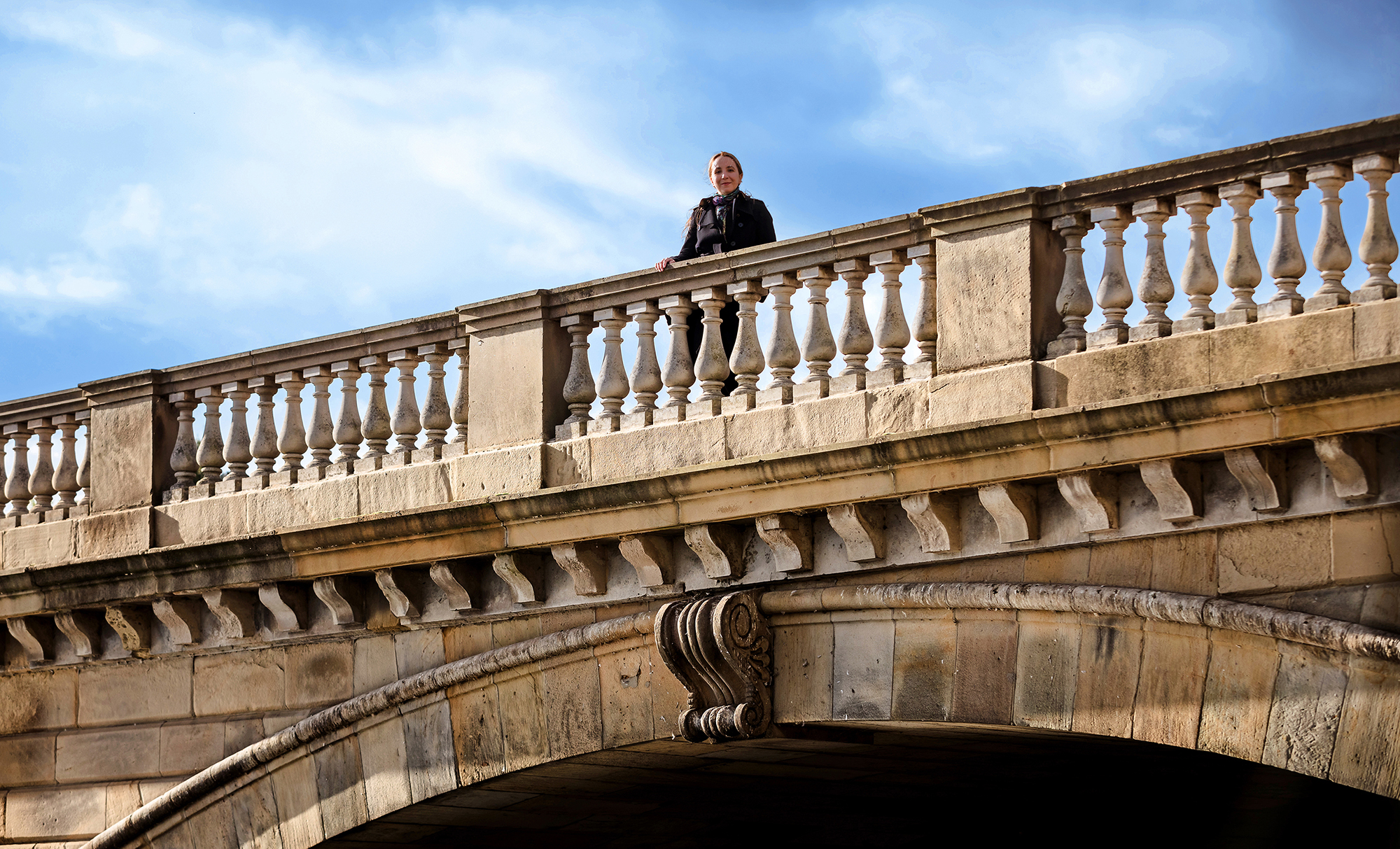
“A lot of what my colleagues and I do involves building bridges,” Caraiani said.
Philipp Ammon for Quanta Magazine
Do you need a separate bridge to go in the opposite direction?
That’s right. The first bridge only takes you one way. If you want to go from Galois representations to modular forms, we rely on the Taylor-Wiles method, which was invented to complete the proof of Fermat’s Last Theorem. So now we can travel in both directions.
Why go to all this trouble? What does crossing these bridges allow you to do?
It’s intellectually satisfying to establish these connections, showing a commonality between once-distinct parts of math. But there’s a practical value too. Solving a mathematical problem can be easier on one side than the other, depending on what the problem is. What often happens with a difficult problem is that you figure out something on one end and then go to the other side to do more things. In order to prove something of substance, you may end up crossing the bridges many times, so you have to be able to move freely in both directions.
How have you helped to build these bridges?
Mathematicians were aware of a limitation in the Taylor-Wiles method: It worked well in two dimensions but not in three. In 2012, Frank Calegari and David Geraghty came up with a strategy for boosting it so it could be used in a 3D setting. This strategy would work, they said, if three conjectures that they had formulated could be solved.
My colleague Peter Scholze solved the first conjecture in 2013; that involved making the first bridge — going from modular forms to the Galois side — bigger and wider than the original 2D version, in order to accommodate new phenomena that occurred in the 3D setting.
In late 2015, Scholze and I realized that work we’d recently done could be used to solve the second conjecture, about having more precise control over where this bridge would land. We didn’t solve it, but came up with a strategy that we felt could work. At that point, Taylor suggested organizing a workshop at the Institute for Advanced Study to build on our work and actually solve the second conjecture.
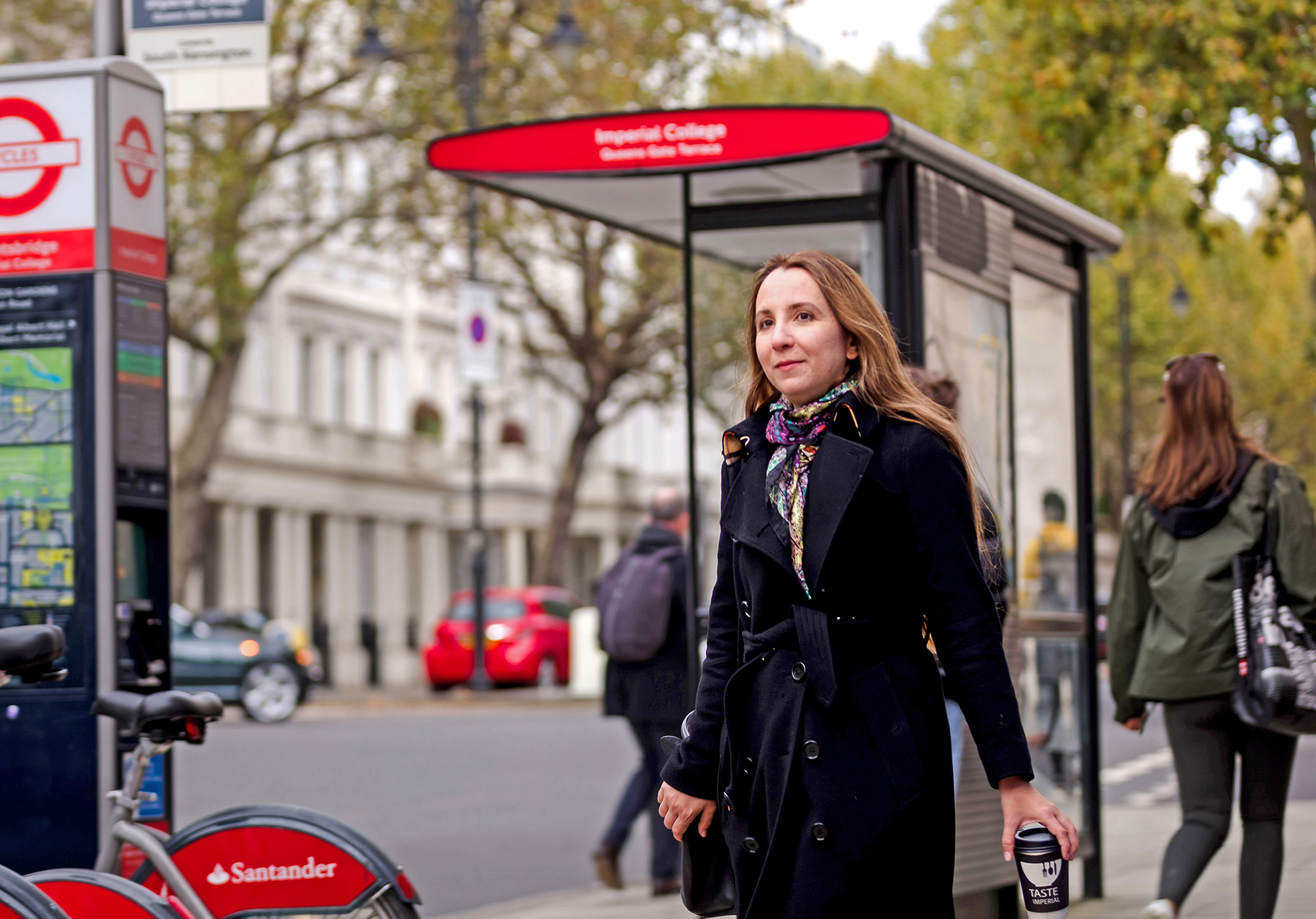
While Caraiani doesn’t think the Langlands program will eventually explain everything in mathematics, she thinks it may someday connect to every area of the field.
Philipp Ammon for Quanta Magazine
Why bring in others at that point, rather than finishing the second conjecture yourself?
The whole proof goes from something very geometric to something very number-theoretic. Scholze and I ended up doing the geometric part, but we felt we weren’t the best people to do the number-theoretic part. Progress would be faster, we decided, if we didn’t keep this to ourselves.
And was it?
We solved the second conjecture, which had been our goal, and found a way to bypass the third conjecture. We built the bridge in the opposite direction — starting from the Galois side and going toward the 3D analogue of modular forms. It successfully carried us past the roadblock that had hindered the Taylor-Wiles method. And this bridge worked not only in three dimensions but in arbitrary dimensions. The paper was posted online on Christmas Day 2018 and is currently being reviewed for journal publication.
Where does that leave you now?
Our treatment of Calegari and Geraghty’s second conjecture only proved two special cases. I am working with James Newton, one of the 10 co-authors, to solve the most general version of that conjecture.
And I’m still interested in the third conjecture, even though we bypassed it before, because it predicts things about related objects called Shimura varieties, which I’m really interested in and want to understand better.
In addition, there are still some settings where we don’t know how to construct any bridge at all. One big goal in the field is to figure out how to construct our bridges in more general settings, using arbitrary polynomials without restrictions and arbitrary number systems. That’s how we can keep expanding the reach of the Langlands program.
How far can this unification eventually go?
I don’t think Langlands theory will evolve in such a way that it can explain everything in mathematics, though I do think it may at least touch on every area.
That said, Robert Langlands really did have a grand vision. He formulated a vast network of conjectures decades ago, and the field is steadily broadening its scope. The more bridges that we cross, the more we think of new conjectures and new places to go. It seems like whenever we make progress, that just gives us a better view of how much more there is to do. I don’t think anyone expects this program will be completed anytime soon.

